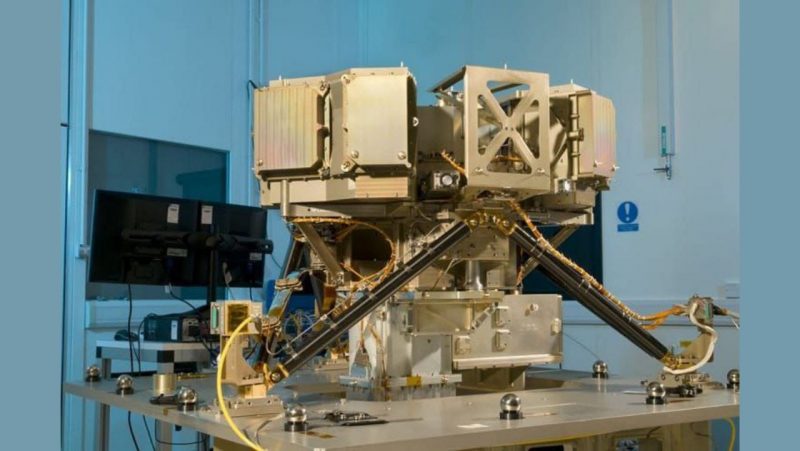The Mid InfraRed Instrument (MIRI) is an infrared camera and spectrometer for the JWST. It operates in the 5 to 27 micron wavelength range, which is difficult or impossible to observe from the ground.
MIRI is very important to the JWST science program for the explanation of star formation, planet formation, and exploring new planets where life might be possible.
The MIRI has three advantages over other infrared devices.
1) Its location in space reduces the blocking effects and strong atmospheric background noise that limit the capabilities of ground-based telescopes.
2) The JWST can be cooled to very low temperatures, which can reduce the telescope’s radiation and significantly improve its sensitivity.
3) The mirror is larger than any other infrared space telescope, providing improved angular resolution.
What Are The Technical Details Of MIRI?
The MidInfrared Instrument (MIRI) includes a camera and spectrometer that sees light in the mid-infrared region of the electromagnetic spectrum, which has longer wavelengths than our eyes can see.
The MIRI supports a wavelength range from 5 µm to 28 µm. Its sensitive detectors allow viewing of redshifted light from distant galaxies, newly formed stars, faintly visible comets, and objects in the Kuiper Belt.
MIRI has an array of three silicon detectors doped with arsenic (Si: As). The camera module provides wideband broadband imaging and the spectrometer module provides a medium resolution spectrometer in a smaller field of view compared to the imager.
MIRI has a nominal operating temperature of 7K. This level of cooling cannot be achieved with passive cooling provided by the thermal management subsystem.
Webb has a spectacular “low temperature cooler” designed to cool MIRI detectors. It is a two-step process where a pulse tube pre-cooler reduces the temperature of the tool to 18K and then JouleThomson Loop heat exchangers reduce this to 7K.
The MIRI optical system measures approximately 1.2m x 1.2m x 1.0m and weighs less than 115kg. This is coupled with a unique cooling system that cools the optical bench to a very low operating temperature of around -266°C, which is over 30 degrees cooler than other observatories.
How Does MIRI Work?
MIRI creates mid-infrared images and spectra with an unprecedented combination of clarity and sensitivity. This includes a chronographic mode that places the mask in front of a bright object, allowing scientists to study the environment around them without being blinded by the light of the object itself.
Conclusion
MIRI cameras will continue the breathtaking astrophotography that has made Hubble admired worldwide by providing wide-angle, wideband imagery. Spectroscopy uses medium-resolution to provide new physical details of distant objects to be observed.
